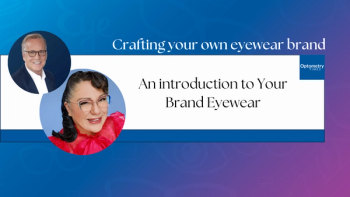
Survival guide to contact lens practice
At the Global Contact Lens Forum at Vision Expo West, a panel of five offered suggestions on succeeding in a contact lens practice.
Las Vegas-At the Global Contact Lens Forum at Vision Expo West, a panel of five offered suggestions on succeeding in a contact lens practice.
Moderator Louise Sclafani, OD, FAAO, was joined on the panel by Barry Eiden, OD, FAAO; Scot Morris, OD, FAAO, ABO; Clarke Newman, OD, FAAO, ABO; and Rob Davis, OD, FAAO.
More on contact lenses:
Establishing a practice
You don’t need to already be an expert contact lens fitter in order to start a contact lens practice.
“I just started taking cases on and learning as I went,” says Dr. Eiden. “Nowadays there are so many contact lens residencies out there now-that’s a great way to immediately gain a level of confidence.”
Just do it. Jump in and get started by observing how eyes are responding to therapies, including contact lenses. And be sure to try new things, because you won’t learn unless you try.
Don’t be afraid to fail when you try that new thing.
“You don’t think two seconds about spending a lot of money on a piece of equipment,” says Dr. Newman, “yet you balk at spending money on diagnostic sets and at losing money on a few cases as you learn something. Those are investment costs.”
Fitting specialty contact lenses offers a higher rate of return over purchasing an instrument, he says.
“The next time you want to spend $50,000, spend it on yourself as you lose money on a few cases as you learn. Become an expert in presbyopia and myopia control. That’s where the growth is.”
Related:
Dr. Morris advises following the four Ps when establishing a contact lens practice:
• Plan. Have one. Know what you want to do, and map out your journey.
• Process. Do you know who’s saying what, who’s doing what, and when they’re doing it in your office? Is your staff talking to patients from the start about new options that can help patients look better, feel better, and see better? What is your response when a lens doesn’t work? On your smartphone, record yourself talking with the patient the next time this happens, then listen to it later. Was it great, or was it bad?
• Product pricing.
• Promotion. Do your patients know you offer these options for better vision? If you’re not telling them, who will?
Marketing your practice
The first thing to remember is that marketing is not necessarily external.
The greatest tool in your practice is your mouth, according to Dr. Sclafani.
“I am the biggest marketer in my hospital-based practice because as my own visual needs have changed, I explain it to my patients,” she says. “All I do is tell my story, and they listen. It makes a difference.”
Related:
Dr. Newman agrees.
“There is nothing stronger than the power of the doctor,” he says. “What you say in the exam room makes all the difference.”
He plans to prime patients for that exam room conversation by projecting questions on the walls in his reception area, questions such as, “Do you want to see better?”
Dr. Morris suggests asking patients only two questions:
• What are we doing well?
• What could we do better?
Print these questions on a small card to hand to patients while you’re documenting the exam. Asking patients to do this while they’re still in the office, rather than mailing a survey that likely will be thrown away or offering an online survey option that won’t be completed despite best intentions, will increase your chances of getting information. Use those few quiet moments wisely.
Technology in the contact lens practice
The perception patients have of your office can be driven by the technology you have, according to Dr. Eiden. It can create an impression in your patients’ minds that you’re state of the art.
For Dr. Eiden, the two technologies which have been a game changer for him are anterior segment OCT and tomography.
Related:
Dr. Newman recommends spending money on the best-quality slit lamp you can get.
Dr. Davis is waiting for a contact lens module to come by UK-based Iriss. “It’s built on an android phone platform, and it measures horizontal, vertical, and diagonal visible iris diameter as well as pupil size and corneal sag. It’s a device that’s going to change the way we do things,” he says.
Newsletter
Want more insights like this? Subscribe to Optometry Times and get clinical pearls and practice tips delivered straight to your inbox.



















































.png)


